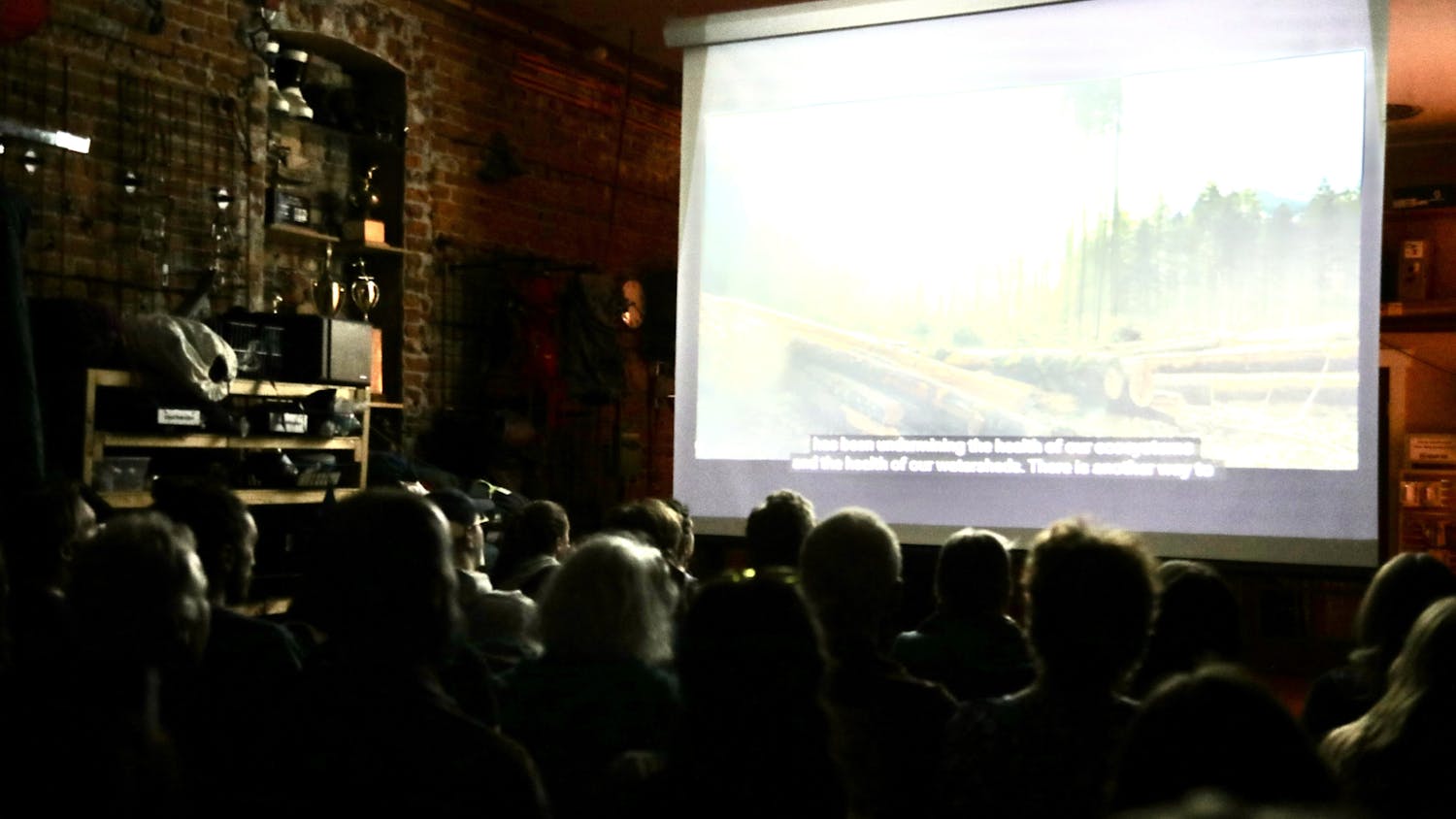Lake Whatcom serves as a source of drinking water for about 96,000 people in the Bellingham area. // Photo by Alison Eddy
Alison EddyThe toxicants and pollutants in the Lake Whatcom reservoir continue to impact water quality, treatment of water found in the tap and the cost to treat that water so it is safe to drink.
Lake Whatcom serves as a source of drinking water for about 96,000 people in the Bellingham area, but it has been on the state’s list of polluted water bodies since 1998, according to the Washington Department of Ecology.
Galen Herz, Bellingham Tenants Union organizer, said he is concerned about the pollution in Lake Whatcom and the cost it takes to treat the water so it is safe to drink.
“All of us, whether we are homeowners or renters, pay for the cleaning and drinking of the water from Lake Whatcom,” Herz said.
He said he has to pay additional utility fees to his landlord in order to support the cost of treating the water.
City of Bellingham Engineering Technician Eli Mackiewicz said in an email that the city’s watershed fund collects a $14 monthly fee from all water users for protecting water quality in the Lake Whatcom reservoir.
He also said the total utility bill that contributes to the Storm and Surface Water Utility is between $7-10 per month for all city residents. He said this utility fee funds projects and programs that protect water quality in the Lake Whatcom reservoir.
April Markiewicz, Huxley College Institute of Environmental Toxicology associate director, worked for three years in the Institute for Watershed Studies, served for six or seven years on the city’s Lake Whatcom Land Acquisition Program Committee and was a member of People for Lake Whatcom.
Markiewicz said her biggest concern was pollutant trihalomethanes in the water that were created during the treatment of the raw water at Whatcom Falls Park.
She said the trihalomethanes are formed when the city bubbles the filtered water with chlorine gas to sterilize it so the water stays disinfected in our pipes and taps. She said the chlorine attaches itself to carbon in the water.
“You get these trihalogenated carbons with chlorines coming off from it, and those can cause cancer in human beings,” Markiewicz said.
Not only do toxicants contaminate Lake Whatcom, but Markiewicz said the city found gasoline in the raw water due, in large part, to motorized watercrafts on the lake.
Herz said he does not think people should use the same lake Bellingham’s drinking water comes from as a source for recreational activity.
“I want clean drinking water, and I don’t think somebody’s desire to play around with a motor boat on the source of our drinking water should jeopardize our health and safety,” Herz said.
Markiewicz said that because Lake Whatcom is listed by the federal government as a navigable waterway, boats cannot be removed from the lake. She said the city banned the use of two-stroke engines, which dump gasoline products in the water, in 2009.
Markiewicz and Herz both said the people who live on the watershed contribute more pollutants and toxicants into the lake.
“A very small portion of the Bellingham population uses motor boats on the lake and dumps fertilizer on their lawns by the lake, but the actions of that very small population affects the larger community,” Herz said.
Markiewicz also said she supported creating a graduated fee structure where people closest to the watershed pay more and fees decrease as you get farther away from the lake.
Mackiewicz said in an email that the city’s filtration system is robust, addresses pollutants of concern and, as a result, the City of Bellingham has won a number of “taste tests” held by various water providers.
Markiewicz said the city signed an agreement with the Department of Ecology, Whatcom County and the sewer district that stated they will strive to get the lake to where it should be, or at least stabilized, within 50 years.
“It’s a great step in the right direction in terms of at least protecting those people who drink the water from the tap,” Markiewicz said. “It also buys us time to work with the inhabitants around the lake.”
For more information about the watershed fund and rate information about the Storm and Surface Water Utility, check out the Lake Whatcom Watershed Management News, Information and Resources website and the 2018 Bi-Monthly Utility Billing Rates.





